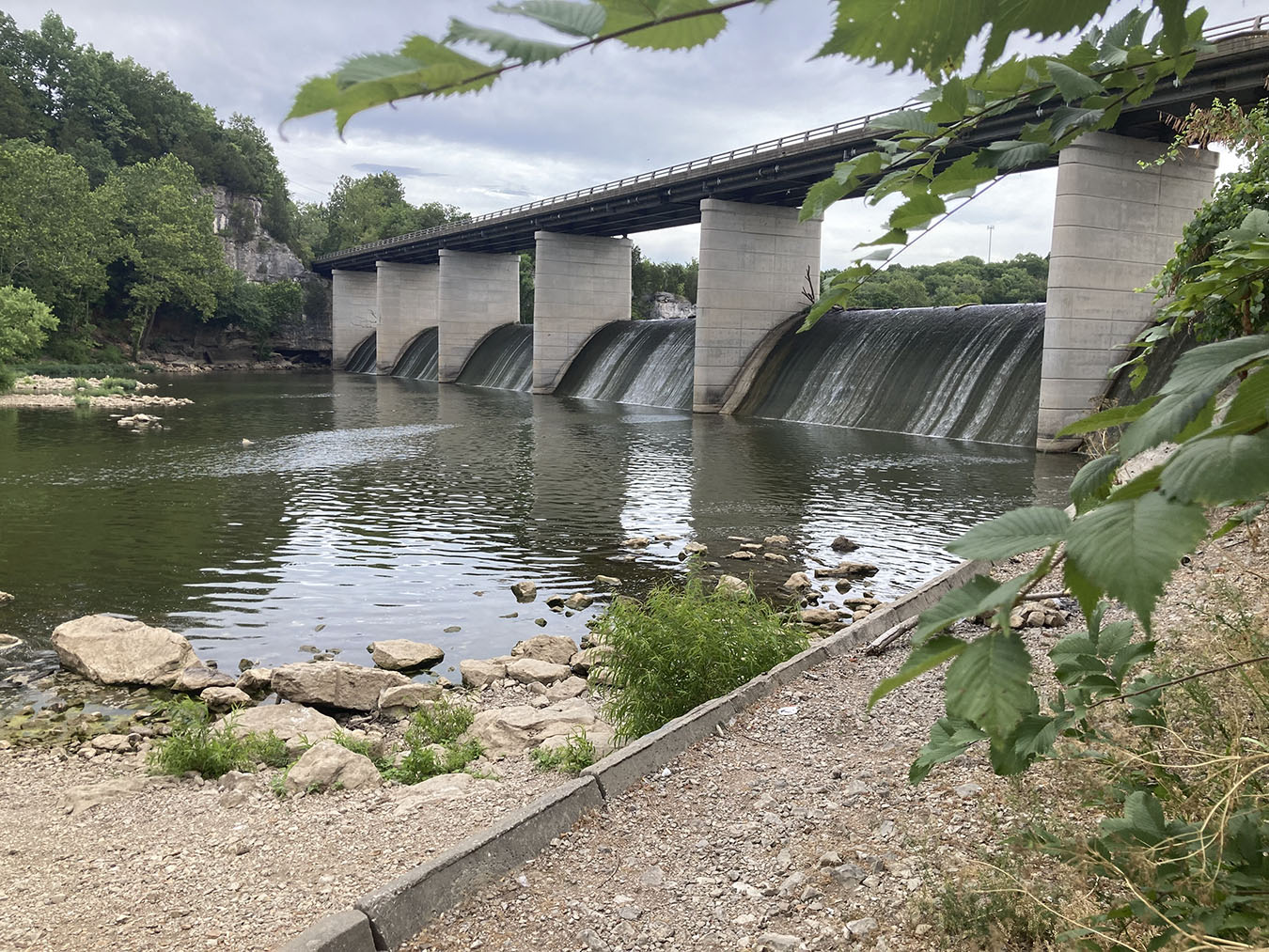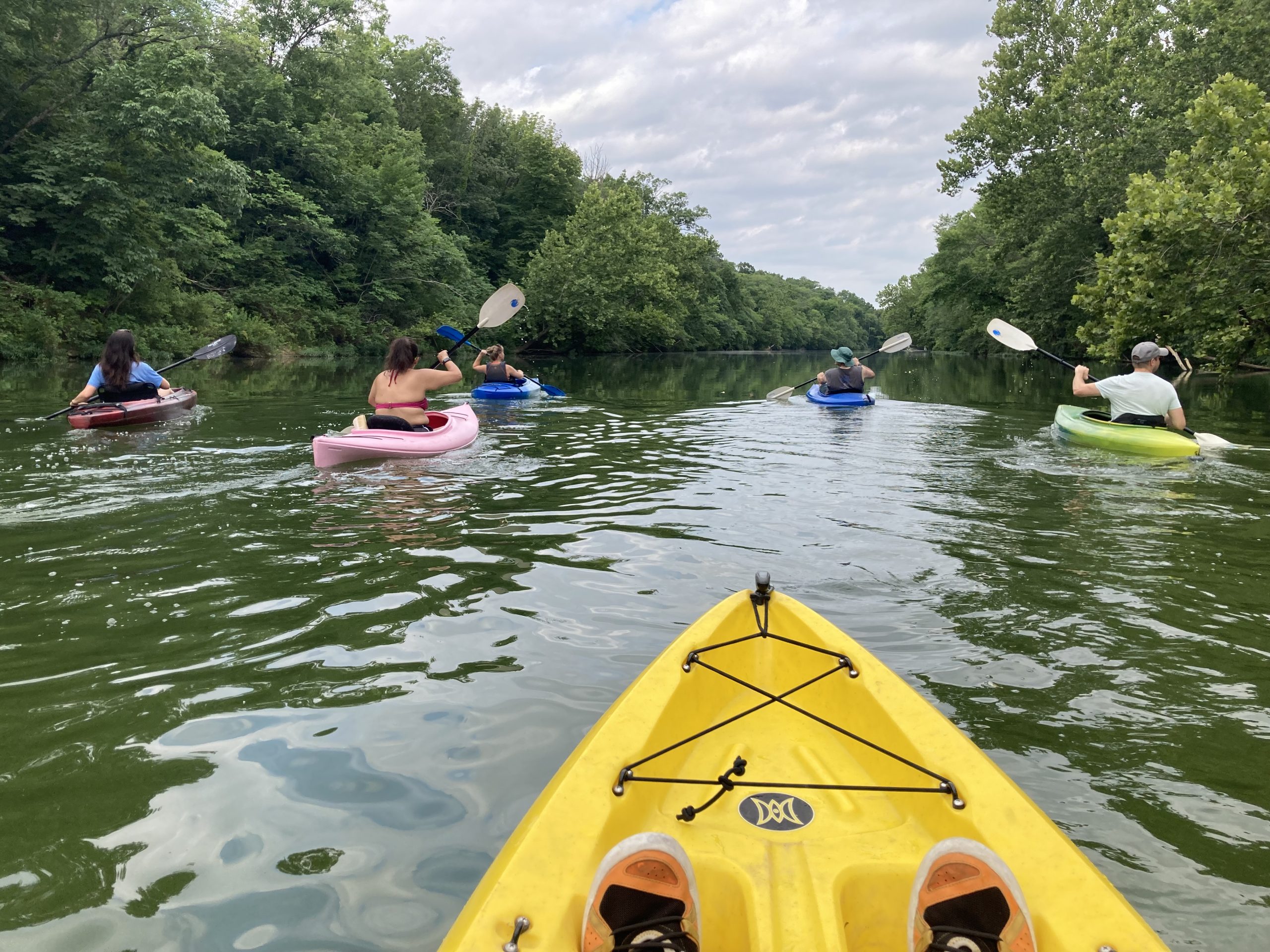The city of Springfield is taking a closer look at developing Lake Springfield into a more appealing water recreation spot on the south side of town.
But the lake — formed in 1957 when the James River was dammed to provide cooling water for the James River Power Station — faces some environmental challenges if it's going to become a more widely used water playground.
In 2020, Lake Springfield was listed as an impaired waterway by the Environmental Protection Agency because of algae blooms that can deplete oxygen in the water and cause a bad smell when the algae dies and decays.
Aside from making the water look bad, this kind of algae bloom is not a health risk to humans, according to the EPA, but it can harm aquatic life by removing oxygen from the water and can cause fish kills.
The upper James River that fills Lake Springfield also was listed as an impaired waterway due to the presence of E.coli bacteria, which can make a person sick if it's ingested.
And the Department of Health and Senior Services has posted a warning to anglers against eating more than one serving of catfish or carp per month because of the presence of PCBs — a known carcinogen from chemicals used in electrical equipment — that accumulates in the fishes' flesh.
That all might sound bad. But Brent Stock still sees great potential for the lake and the river, as well as new interest in improving the water quality as more people try out paddle sports.
“The water quality in Lake Springfield is better than it was a couple of decades ago,” said Stock, executive director of the nonprofit James River Basin Partnership, which is working to improve the health of the waterway. “It's a community lake and it could really still be quite the resource for the area.”

Algae blooms fed by runoff
Lake Springfield's biggest issue is algae, which is most noticeable in mid- to late summer when rain typically diminishes and summer heat and sunshine cause tiny algae plants to thrive. The blooms can give the water a greenish color.
Nutrients that wash into the river and lake are like steroids for algae. Stock said nutrients come from excessive lawn fertilizer use in urban areas and pet waste that washes into storm drains and goes straight into area streams and rivers.

Runoff from agricultural areas above Lake Springfield also puts livestock manure and erosion runoff into the lake, another nutrient source. Leaking septic systems also can help trigger algae blooms downstream.
Stock said the James River Basin Partnership has received EPA grants to try to target that kind of “nonpoint source” pollution to keep nutrients out of the river and lake. The group has worked with land owners to encourage them to keep cattle out of the river and tributary streams.
It's also trying to improve riparian corridors — think green filters along the river — to catch runoff and nutrients before they reach the water.
“We're also focusing on urban practices like proper fertilizer use with our yard ethics program,” Stock said. “We're trying to limit the amount of nutrients coming off a property by encouraging people to get a soil test for their yards through Greene County Extension so they don't use too much fertilizer.”

James River Basin Partnership isn't the only organization working to keep Springfield-area water sources clean. The nonprofit Watershed Committee of the Ozarks also works to reduce and prevent pollution from getting into Springfield and Greene County waterways.
Stock said he hopes more people will take an interest in Lake Springfield and James River water quality now that those waterways might become a bigger recreation spot for the city. The city is in the process of hiring a consultant to look at ways to expand recreation opportunities at Lake Springfield now that the coal-fired portion of the power plant is no longer used.
A whitewater paddling park at the lake or on the river is one of the ideas that's being considered. That could spark new interest in the lake and its health among Springfieldians.
A whitewater kayak park at Lake Springfield? Maybe...
Could part of Lake Springfield — or the James River that feeds it — be transformed into a whitewater kayaking park?
“I sure hope so,” Stock said. “Our message is to connect and protect. There's way more people using lakes and rivers these days, a lot more people seeking that kind of recreation, especially after the pandemic. Our hope is we can make them conservationists who'll help protect the water they use.”
Lake Springfield and the upper James River are likely to remain on the impaired waters list when the Missouri Department of Natural Resources reviews sampling data from those areas.
The conditions that caused the impaired listing — nutrient loads flowing into the lake and river — still exist, according to Robert Voss, director of the Monitoring and Assessment Unit of DNR's Water Protection Program.
He noted that Lake Springfield so far has not experienced the more serious problem of cyanobacteria contamination, a kind of bacteria that can release toxins into the water that are poisonous to humans and animals.
Cyanobacteria, better known as blue-green algae, “looks like someone spilled neon green paint in the water,” Voss said.
DNR monitors waterways for blue-green algae and has a Missouri Harmful Algal Bloom Response Team that checks out and documents reports of cyanobacteria outbreaks.



